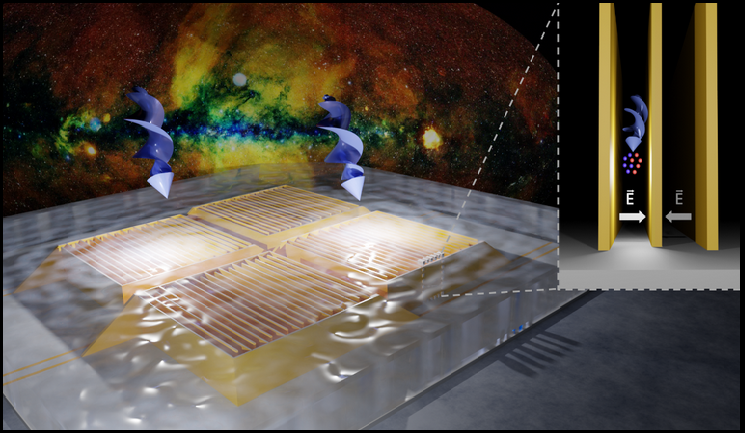A new device concept for lightweight, compact and highly sensitive X- and Gamma- ray detection in Space
Research domain: Energy - Subtopic: Metamaterial technologyThe detection of the high-energy photons enables diverse fields of applications and basic research, from medical imaging to security scanners, to observation of high energy collision, and astronomical events. Despite divergences in the detection parameters needed for different applications, a common-ground challenge, yet to be solved, is the efficient detection with high spatial resolution. In particular, considering the telescope applications, while significant advancements in mirror materials and design have been achieved in the last decades, the indirect (scintillators) or the direct detectors (such as CZT) have not essentially evolved. Recently, new silicon-based direct detectors featuring good spatial resolution have been proposed for the upcoming X-ray telescope missions (Athena, Lynx). However, these prototypes fall short in limit-of-detection (LoD) and sensitivity due to the low-Z (atomic number) of the active element. In this proposal we put forward a novel direct detection scheme based on 3D micro-structure electrodes filled with solution-processable high-Z metal halide perovskites. These will drastically improve the theoretical efficiency of the photon to electron generation, at least matching the spatial resolution of the Athena and Lynx solutions. The underlying idea is to decouple the constraints of having a thick semiconductor layer to stop the high-energy photons, and at the same time having a short collection path to efficiently extract the photo-generated charges from the volume where they are created. The use of a high-performing hybrid material as an active layer enables the fabrication of small volume pixels hence efficient 3D electrodes, a solution that cannot be achieved with CZT single crystal or silicon-based photodetectors. The X- and Γ-ray detectors fabricated with this approach will reduce the current payload (achieved through component micro-fabrication), and they will exceed the sensitivity and the LoD of next-generation detectors.

Cartoon of the project.
